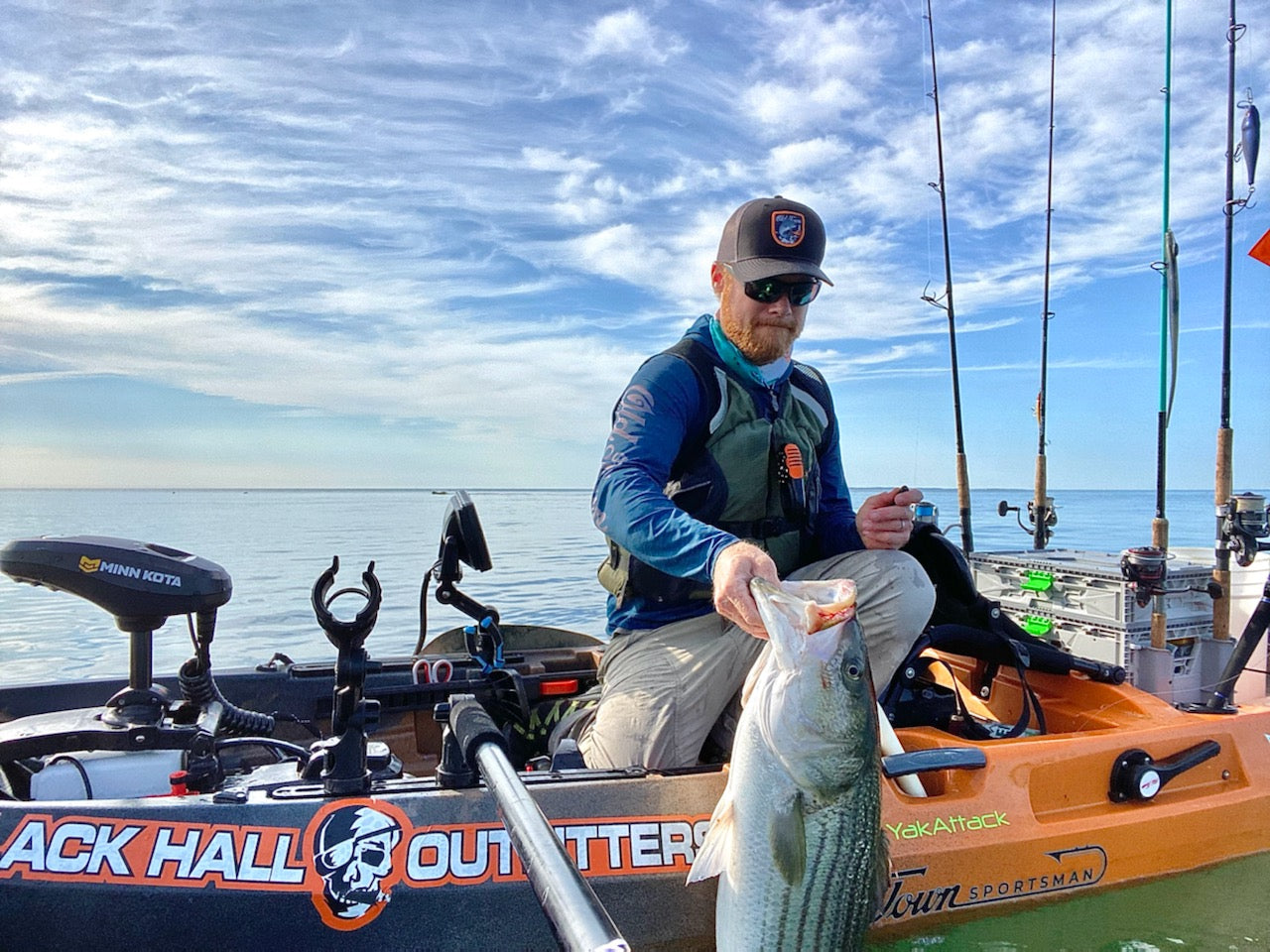
TogTober 2025 is HERE!
October 16th-19th 2025EVENT IS NOW OVER. THANK YOU TO ALL SPONSORS AND PARTICIPANTS! Rules: Weigh-Ins conclude at 3 PM SHARP on October 19th. Any fish weighed in after 3 PM will not be counted. ALL WEIGH-INS MUST BE DONE AT...

When most people think of kayaking, they picture someone sitting in the center of a canoe-type craft, paddle in hand, cutting through the water. But as kayaks have gained popularity over the years and have been used for more than just recreational purposes, it shouldn't surprise you to learn that several different styles of kayaks have emerged. And while the conventional kayak we described above still has its place and certainly isn't going anywhere, pedal drive kayaks are becoming more popular, especially for fishing.
Here we'll touch on the pedal fishing kayak, how it works, its key benefits, and more. Read on to learn more about pedal kayak fishing:
Pedal drive kayaks are a mix between a paddle boat and a kayak. They don't look any different from a conventional kayak, yet they're driven with the feet via pedals rather than with the arms via a paddle.
More specifically, pedal drive kayaks have pedals in the front center of the boat where kayakers place their feet. As the kayakers pedal, the kayak moves forward and cuts through the water, with direction controlled via a rear rudder. Most pedal drive kayaks can travel both forward and in reverse with ease.
Pedal drive kayaks were first created in 1997 when foot propulsion technology was introduced by Hobie. It was particularly embraced by kayak fishermen as a fishing kayak with pedals meant their hands would be free to cast and reel as they moved through the water. Today, two types of pedal drive kayaks are available: push pedal kayaks and rotational pedal kayaks. Here’s how the two types differ:
Over the years, the pedal drive fishing kayak has been improved and is even suitable for ocean fishing. Old Town has developed some of the industry's best models for pedal kayak fishing, including the Sportsman Salty PDL 120, Sportsman 106 PDL, and Sportsman 120 PDL, all available at Black Hall Outfitters.
There are a variety of benefits to switching from the conventional paddle kayak to a pedal drive kayak for fishing purposes with the biggest benefit being that a pedal drive model offers the ability to free up your hands to fish. In other words, you won't have to place your fishing rod in a rod holder or put it elsewhere in the kayak cabin when you want to adjust your position in the water or move to a new location. This hands-free benefit has been one of the biggest reasons the pedal drive kayak has been so widely adopted by fishermen.
Other key benefits of using a pedal drive kayak include the following:
There are various other benefits associated with pedal drive kayaks. For instance, they tend to be more accessible than conventional paddled kayaks, and are also more stable.

October 16th-19th 2025EVENT IS NOW OVER. THANK YOU TO ALL SPONSORS AND PARTICIPANTS! Rules: Weigh-Ins conclude at 3 PM SHARP on October 19th. Any fish weighed in after 3 PM will not be counted. ALL WEIGH-INS MUST BE DONE AT...

From rods, reels, and line, to location and presentation, join resident Hardtail expert Matt Stone for Hardtail Happy Hour! Learn everything you need to know to extend your fishing season by targeting these electric hardtails in local waters. Frothing surface...

Take advantage of special deals on top-tier fishing gear, limited-time offers, and must-have products! Whether you're upgrading your setup or stocking up for the season, this is the perfect time to score unbeatable savings. Stay tuned for more details!Additionally, many...
Comments
Leave a comment